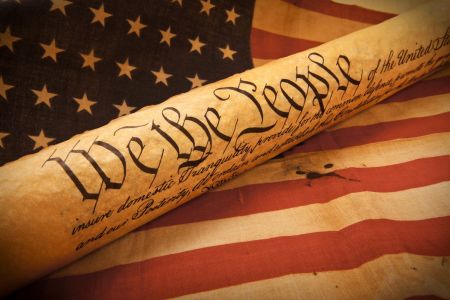The Mutually Beneficial Relationship Between Washington D.C. and Silicon Valley

Worlds are colliding. Startups are increasingly entering industries like healthcare, transportation, and aviation where government and regulators play a bigger role. In turn, government is learning very quickly from experiences like Healthcare.gov that their policies and programs depend on technology.
Since the U.S. government lacks experience launching consumer-facing technology products and startups aren’t used to working with regulatory red tape, communication between the two can often result in an unproductive or even adversarial relationship. But that is beginning to change, thanks to initiatives at the White House and efforts from gov-tech organizations looking to change the world through the use of smart technology.
In a recent episode of KPCB’s Ventured podcast, my partners Swati Mylavarapu and Mike Abbott had a discussion with KPCB Entrepreneur in Residence Ryan Panchadsaram about the intersection of government and technology. Panchadsaram has a unique perspective, as he spent 3 years working as the U.S. Deputy Chief Technology Officer at the White House. Abbott and Panchadsaram first met when they were brought in to help rescue Healthcare.gov.
During the podcast, they discuss how Healthcare.gov was fixed, how to uncover opportunities for startups to work with government, and how government can adopt the latest technological advances. There’s a massive need for Silicon Valley technologists and government agencies to work more closely together; our country is counting on it.
Regulation should not prevent innovation
While working with regulators goes against the pirate nature of ‘the valley,’ startups in several domains can’t just ignore regulation. Regulators must constantly be thinking about how policy can keep up with innovation. Startups, on the other hand, need to understand regulation, and should invest in these government relationships early on.
For instance, KPCB company Airware has been very involved with the Federal Aviation Administration (FAA) to ensure they have an opportunity to shape regulation of remote-controlled aircrafts. Other companies like 23andMe went head-to-head with government regulators but ultimately the DNA testing company and the Food and Drug Administration (FDA) reached an agreement on how to best sell direct-to-consumer DNA testing kits.
Government is using technology to innovate
Through multiple efforts like the U.S. Digital Service and the Presidential Innovation Fellows, the U.S. government is actively recruiting talented engineers, product managers, and designers to work on the challenges it is facing. Another great example of the convergence of government and technologists is through organizations such as Jennifer Pahlka’s Code for America, which brings engineering and design talent to local municipalities.
The inside story behind Healthcare.gov
When Healthcare.gov launched, the site was inaccessible to the majority of the public and people were unable to sign up for health plans. There were many problems; to start with, there were over 20 contractors on the project, yet no one had the sole responsibility to ensure that the website actually worked.
Many basic processes to launch a consumer product were not in place. There were no monitoring tools, consolidated bug lists, or dashboards for transparency into issues. Furthermore, most companies in Silicon Valley would have launched the initial platform as a private beta before opening it up to all consumers.
To respond to the disaster, the White House assembled a team of technologists who had experience building and scaling sites from Google, Microsoft, and the campaign. The team quickly formed a partnership with the contractors and their government colleagues, because it would take everyone working together to fix the site.
Post Mortem of Healthcare.gov
After the turnaround, the rescue team published a playbook so future projects could follow best practices borrowed from the most successful private sector companies and successful government projects. Critical plays include starting with user needs by conducting user research, adopting agile practices to de-risk project timelines, and using flexible hosting environments to allow systems to scale.
How to sell technology to the government
The government is the largest enterprise in the U.S., employing a total of 22 million people (15% of the labor force). With a market opportunity of $400 billion dollars, startups should consider selling their technology to the government.
The trend around consumerization of IT has slowly allowed new technologies to be adopted by government – without having to slog through the traditional government contracting process. Slack, Google Docs, and Dropbox are good examples of this.
However, if a startup wants to sell to government, the current model requires that they partner with an existing government contractor (often called a “prime”) that has an existing relationship with government. This prevents a lot of companies from selling because they have so many dependencies in developing a direct relationship with the customer. Ultimately, the most important place to start is to build the best tool possible so government employees will want to use it.
Spend time in D.C. to change the world
While Abbott was at Twitter, he saw how the desire and need for social impact resonated with millennials and employees in general. Most technologists who are attracted to working for government are focused on the mission.
While the pay isn’t the same as a Google or Facebook salary, the U.S. government can offer the opportunity to work on hard problems that impact large populations.